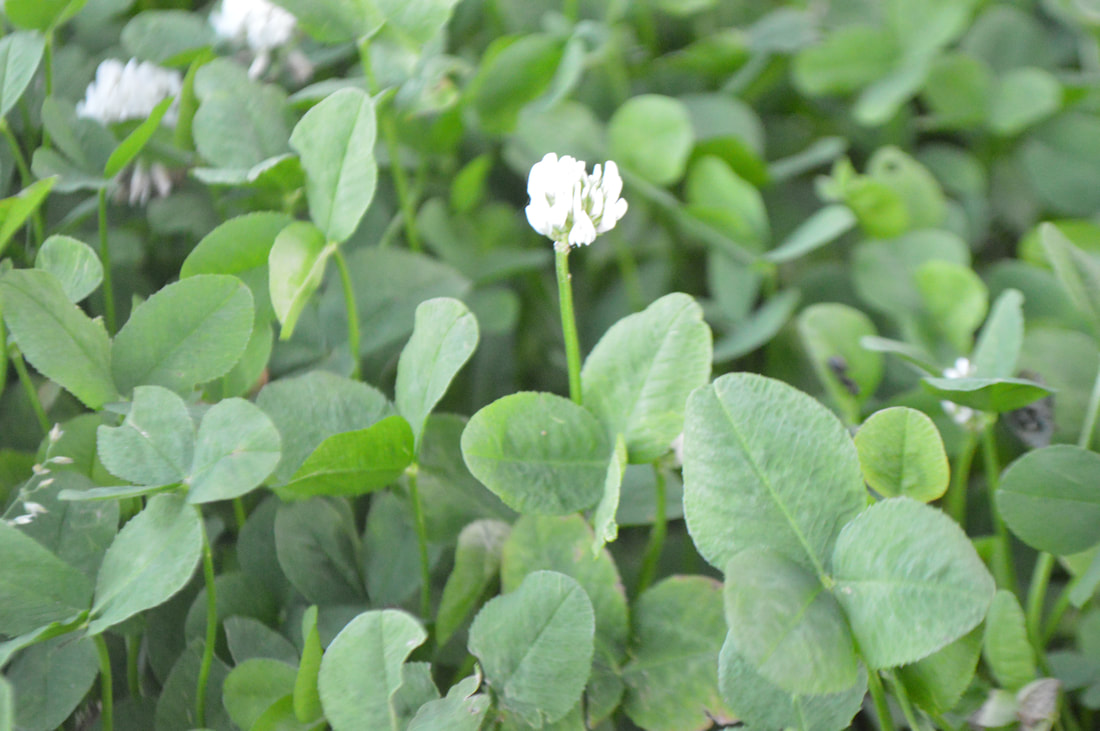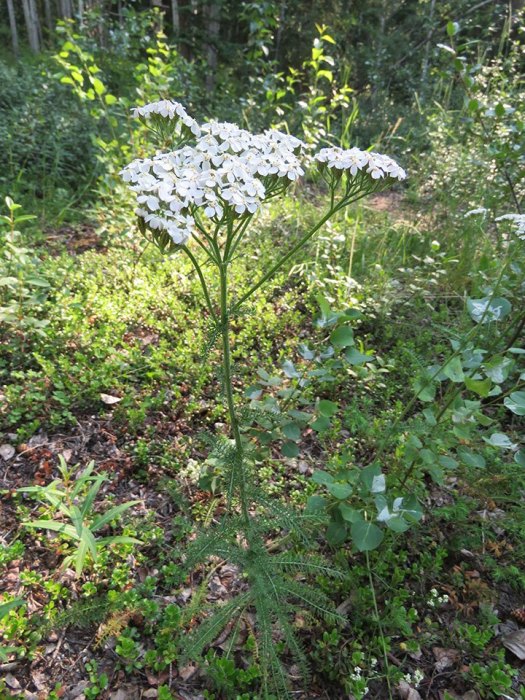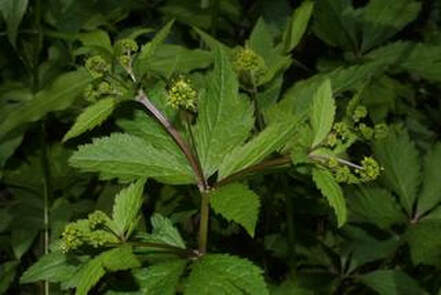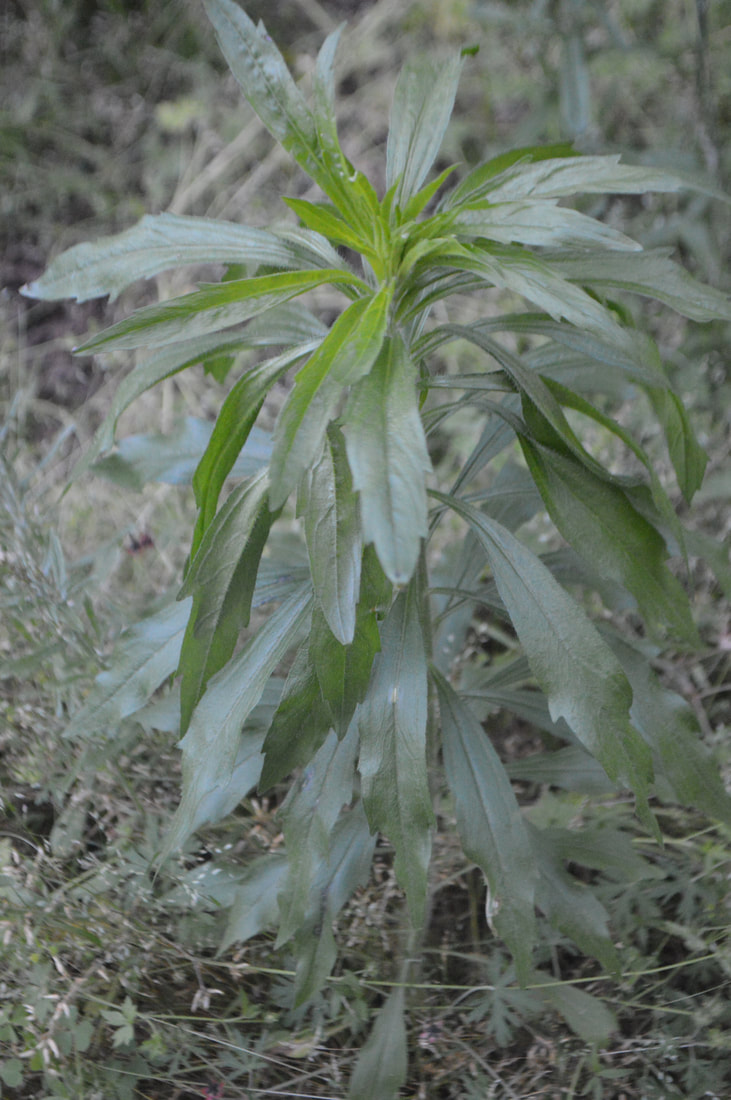Wild Medicinal Plants
Below, you will find three different sections on this page. The first is understanding what the different types of preparations used, medical terms and
Types of Medicinal Preparations:
Infusion: Made from steeping an herb or flowers in water and then strained to make a tea.
Decoction: Made from taking the woody parts of the plant, such as the bark, root or stem, and then boiling it for a while to make a tea. Depending upon the size of the root or bark will determine the amount of time to be boiled. Some may have to be boiled and left to stand over night before the bark is softened enough and the plant extract drawn out enough.
Maceration: Made by soaking the herb in cool water for a period of time in order to draw out the needed plant extract. Usually this is done to mucilaginous herbs which produce a jelly-like substance such as the aloe plant.
Fomentation: Is when you take a cotton cloth and you allow it to be steeped in either an infusion or a decoction in order to absorb the liquid into the material. Afterwards the cloth is placed externally upon the skin or affected area.
Wash: When you take an infusion or a decoction in order to use the liquid as a wash for disinfecting an area, cleaning of the skin, or to soak in a bath, like an epsom salt bath, to alleviate muscle aches and pain.
Poultice: Made by taking the bark and pulverizing it into a powder and then adding hot or cold water to make a paste from the pulverized bark. You can then use this paste as a topical application in order to stop bleeding, reduce swelling or pain and is usually kept in place by a cloth or bandage.
Tinctures: Made by soaking the herb or root in a solvent liquid, such as alcohol or water. Once soaked for a period of time the liquid is strained or pressed in order to yield the tincture. A usual concentration of 1 part herb, or root or seed to 5 or 10 parts liquid.
Decoction: Made from taking the woody parts of the plant, such as the bark, root or stem, and then boiling it for a while to make a tea. Depending upon the size of the root or bark will determine the amount of time to be boiled. Some may have to be boiled and left to stand over night before the bark is softened enough and the plant extract drawn out enough.
Maceration: Made by soaking the herb in cool water for a period of time in order to draw out the needed plant extract. Usually this is done to mucilaginous herbs which produce a jelly-like substance such as the aloe plant.
Fomentation: Is when you take a cotton cloth and you allow it to be steeped in either an infusion or a decoction in order to absorb the liquid into the material. Afterwards the cloth is placed externally upon the skin or affected area.
Wash: When you take an infusion or a decoction in order to use the liquid as a wash for disinfecting an area, cleaning of the skin, or to soak in a bath, like an epsom salt bath, to alleviate muscle aches and pain.
Poultice: Made by taking the bark and pulverizing it into a powder and then adding hot or cold water to make a paste from the pulverized bark. You can then use this paste as a topical application in order to stop bleeding, reduce swelling or pain and is usually kept in place by a cloth or bandage.
Tinctures: Made by soaking the herb or root in a solvent liquid, such as alcohol or water. Once soaked for a period of time the liquid is strained or pressed in order to yield the tincture. A usual concentration of 1 part herb, or root or seed to 5 or 10 parts liquid.
MEDICAL TERMS:
|
Abortifacient
Causes an abortion. Acrid Causes heat and irritation when applied to the skin. Adaptogen Helps the body 'rise' to normal stress situations, thus preventing the many chronic degenerative diseases. allantoin An effective moisturizing ingredient when used in skincare, and its gentle, non-irritating qualities make it an excellent addition to anti-aging products for those with sensitive or easily irritated Alterative Causes a gradual beneficial change in the body, usually through improved nutrition and elimination, without having any marked specific action. Anaesthetic Numbs the feeling in a local or general area of the body. Analgesic Relieves pain. Included under Anodyne. Anaphrodisiac Reduces sexual desire. Anodyne Relieves pain. Antacid Counters excess acidity in the stomach. Anthelmintic Expels parasites from the gut. Antiaphonic Restores the voice. Antiarthritic Treats arthritis. Antiasthmatic Treats asthma. Antibilious Treats nausea. Antibiotic See antiseptic. Antibacterial Kills bacteria. Anticholesterolemic Prevents the build up of cholesterol. Anticoagulant Removes blood clots. Antidandruff Treats dandruff. Antidermatosic Prevents or cures skin complaints. Antidote Counters poisoning. Antiecchymotic Helps remove bruising Antiemetic Prevents vomiting. Antifungal Treats various fungal problems such as Candida. Antihaemorrhoidal Treats haemorrhoids (piles). This would probably be best added to another heading. Antihalitosis Treats bad breath Antihydrotic Reduces perspiration. Antiinflammatory Reduces inflammation of joints, injuries etc. Antiperiodic Counteracts recurring illnesses such as malaria. Antiphlogistic Reduces inflammation. Antipruritic Treats itching of the skin. Antipyretic Treats fevers. See Febrifuge. Antirheumatic Treats rheumatism. Antiscorbutic A plant rich in vitamin C that is used to counteract scurvy. Antiscrophulatic Counteracts scrofula. (TB, especially of the lymph glands) Antiseptic Destroys or arrests the growth of micro-organisms. Antispasmodic Treats muscular spasms and cramps. Antitumor Used in the treatment of cancer. Antitussive Treats coughing. Antivinous Treats addiction to alcohol Antiviral Treats virus diseases Aperient A mild laxative. Aphrodisiac Increases the sexual appetite. Appetizer Improves the appetite Aromatherapy Plants whose essential oils are used in Aromatherapy Aromatic Having an agreeable odour and stimulant qualities. |
Astringent
Reduces the flow of secretions and discharges of blood, mucus, diarrhoea etc. Bach Plants used in the Bach flower remedies. Balsamic A healing and soothing agent. Bitter Increases the appetite and stimulates digestion by acting on the mucous membranes of the mouth. Also increases the flow of bile, stimulates repair of the gut wall lining and regulates the secretion of insulin and glucogen. Blood purifier Purifies the blood. Blood tonic Vitalizing the blood Cancer Used in the treatment of cancer. Cardiac Used in the treatment of heart problems. Cardiotonic A tonic for the heart. Carminative Reduces flatulence and expels gas from the intestines. Cathartic A strong laxative but less violent than a purgative. Cholagogue Increases the flow of bile and its discharge from the body. Contraceptive Prevents fertilization occurring in females. Cytostatic Slows or controls the growth of tumours. Cytotoxic Destroys body cells. Used in the treatment of diseases such as cancer. Decongestant Removes phlegm and mucous, especially from the respiratory system. Demulcent Soothes irritated tissues, especially the mucous membranes. Deobstruent Clears obstructions from the natural ducts of the body. Deodorant Masks smells. Is this medicinal? Depurative Eliminates toxins and purifies the system, especially the blood. Detergent A cleansing agent, used on wounds etc. It removes dead and diseased matter. Diaphoretic Induces perspiration. Digestive Aids digestion. Disinfectant Used for cleaning wounds. Diuretic Promotes the flow of urine. Emetic Induces vomiting. Emmenagogue Restores the menstrual flow, sometimes by inducing an abortion. Emollient Softens the skin. Enuresis Treats bed wetting. Errhine Promoting or inducing nasal discharge Expectorant Clears phlegm from the chest by inducing coughing. Febrifuge Reduces fevers. Foot care Plants that are used in various ways to treat foot problems. Galactofuge Stops the flow of milk in a nursing mother. Galactogogue Promotes the flow of milk in a nursing mother. Haemolytic Breaks down red blood corpuscles to separate haemoglobin. Haemostatic Controls internal bleeding. Hallucinogenic Causes the mind to hallucinate. Hepatic Acts on the liver (for better or worse!). Hydrogogue A purgative that causes an abundant watery discharge. Hypnotic Induces sleep. Hypoglycaemic Reduces the levels of sugar in the blood. Hypotensive Reduces high blood pressure. Infertility Used in problems of human fertility. |
Irritant
Causes irritation or abnormal sensitivity in living tissue. Kidney Used in the treatment of kidney diseases Laxative Stimulates bowel movements in a fairly gentle manner. Lenitive Soothing, palliative. Lithontripic Removes stones. Miscellany Various medicinal actions that need more clarification. Mouthwash Treats problems such as mouth ulcers. Mydriatic Dilates the pupils of the eyes. Narcotic Induces drowsiness and gives an artificial sense of well-being. Nervine Stimulates and calms the nerves. Nutritive A food for convalescents to help restore strength. Odontalgic Treats temporary toothache and other problems of the teeth and gums. Ophthalmic Treats eye complaints. Oxytoxic Hastens parturition and stimulates uterine contractions. Parasiticide Treats external parasites such as ringworm Pectoral Relieves respiratory diseases, a remedy for chest diseases. Plaster Used in the treatment of broken bones. Poultice Used in the treatment of burns etc. Purgative A drastic laxative. Refrigerant Cools the body. Resolvent Breaks down tumors. Restorative Restores consciousness or normal physiological activity. Rubefacient A counter-irritant and external stimulant. Salve Soothes and heals damaged skin. Sedative Gently calms, reducing nervousness, distress and irritation. Sialagogue Stimulates the secretion of saliva. Skin Plants used in miscellaneous treatments for the skin. Sternutatory Promotes sneezing and nasal discharges. Stimulant Excites or quickens activity of the physiological processes. Faster acting than a tonic but differing from a narcotic in that it does not give a false sense of well- being. Stings Used in the treatment of stings and insect bites. Stomachic Aids and improves the action of the stomach. Styptic An astringent that stops bleeding by contracting the blood vessels. TB Plants used in the treatment of tuberculosis Tonic Improves general health. Slower acting than a stimulant, it brings steady improvement. Uterine tonic Stimulates uterine contractions. Vasoconstrictor Narrows the blood vessels, thereby increasing blood pressure. Vasodilator Widens the blood vessels, thereby reducing blood pressure. VD Used in the treatment of venereal disease Vermifuge Expels internal parasites. Vesicant A blistering agent. Vulnerary Heals wounds. Warts Used in the treatment of warts, corns etc. Women's complaints A very vague title, it deals with a miscellany of problems peculiar to the female sex. |
MEDICINAL PLANTS:
White Clover
Latin Name: Trifolium repens
|
Medicinal use of White Clover:
This plant is anti-rheumatic (also known as anti-inflammatory), anti-scrophulatic (counteracts scrofula), depurative (having purifying and detoxifying effects), detergent (a cleansing agent) and tonic (improves general health). As an infusion it can be used in the treatment of coughs, colds, fevers and used as a dush for leukorrhoea (abnormal vaginal discharge). When used as a tincture the leaves can be applied as an ointment and applied for those suffering gout. As an infusion the flowers can used as an eyewash. |
yarrow
Latin Name: Achillea millefolium
|
Medicinal use of Yarrow:
This plant can be administered both internally and externally. It is used in the treatment of a very wide range of disorders but is particularly valuable for treating wounds as astringent, stopping the flow of blood, treating colds, as a febrifuge towards fevers, kidney diseases, menstrual pain etc. The whole plant is used, both fresh and dried, and is best harvested when in flower. Some caution should be exercised in the use of this herb since large or frequent doses taken over a long period may be potentially harmful, causing allergic rashes and making the skin more sensitive to sunlight. The herb combines well with Sambucus nigra flowers (Elder) and Mentha x piperita vulgaris (Peppermint) for treating colds and influenza. The herb is antiseptic, antispasmodic, mildly aromatic, astringent, carminative, cholagogue, diaphoretic, digestive, emmenagogue, odontalgic, stimulant, bitter tonic, vasodilator and vulnerary. It also contains the anti-inflammatory agent azulene, though the content of this varies even between plants in the same habitat. The herb is harvested in the summer when in flower and can be dried for later use. The fresh leaf can be applied direct to an aching tooth in order to relieve the pain. |
Black snakeroot
Latin Name: Sanicula canadensis
horseweed
Latin Name: Conyza canadensis
|
Medicinal use of Horseweed:
In traditional North American herbal medicine, Canada fleabane or also called Horseweed was boiled to make steam for sweat lodges, taken as a snuff to stimulate sneezing during the course of a cold and burned to create a smoke that warded off insects. Nowadays it is valued most for its astringency, being used in the treatment of gastro-intestinal problems such as diarrhoea and dysentery. It is said to be a very effective treatment for bleeding haemorrhoids. The whole plant is antirheumatic, astringent, balsamic, diuretic, emmenagogue, styptic, tonic and vermifuge. It can be harvested at any time that it is in flower and is best used when fresh. The dried herb should not be stored for more than a year. The seeds can also be used. An infusion of the plant has been used to treat diarrhoea and internal haemorrhages or applied externally to treat gonorrhoea and bleeding piles. The leaves are experimentally hypoglycaemic. The essential oil found in the leaves is used in the treatment of diarrhoea, dysentery and internal haemorrhages. It is a uterine stimulant and is also said to be valuable in the treatment of inflamed tonsils plus ulceration and inflammation of the throat. A tea of the boiled roots is used to treat menstrual irregularities. A homeopathic remedy is made from the plant. It is used in the treatment of haemorrhoids and painful menstruation. |
...more coming soon...



